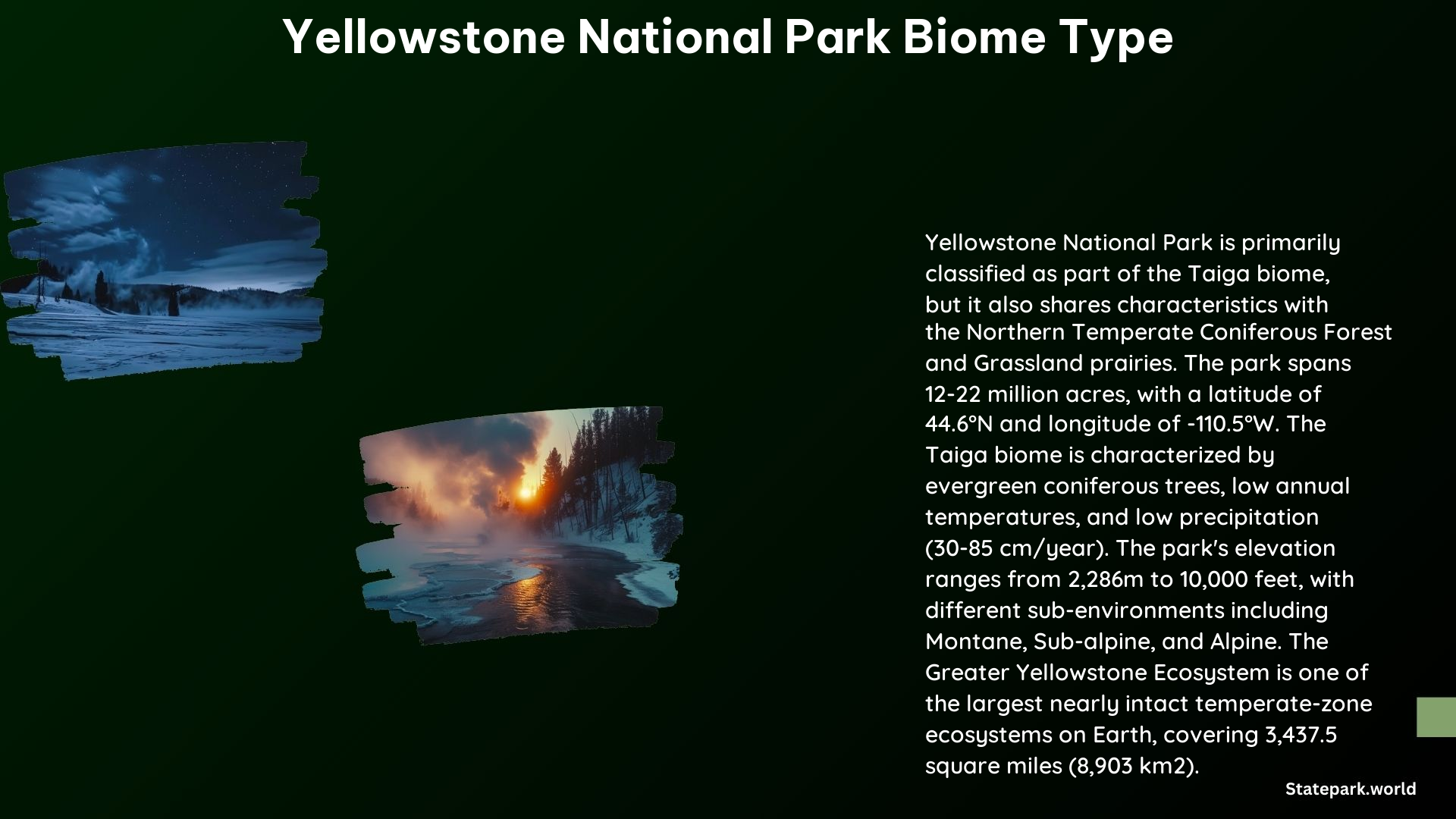Yellowstone National Park is primarily classified as part of the Taiga biome, also known as the boreal forest biome. This biome is characterized by long, harsh winters, short summers, and a wide variety of climatic conditions. The Taiga biome is the largest terrestrial biome on Earth, and it is dominated by coniferous forests, particularly evergreen trees such as spruces, firs, and pines.
Key Features of the Taiga Biome in Yellowstone
Climate
The Taiga biome in Yellowstone is marked by a huge temperature range, from -54°C to 29°C annually, with warm summers and extremely cold winters. The growing season is short, lasting only about three months, while the winter season can last up to six months with temperatures averaging below freezing.
Vegetation
The Taiga biome is characterized by coniferous forests, with trees such as lodgepole pine being abundant in Yellowstone. These trees have adaptations to survive the harsh climate, including needle-like leaves that can soak up sunlight for photosynthesis.
Elevation
Yellowstone’s location in the American Rockies means that much of the park is above 2,286 meters in elevation, which affects the climate and vegetation. The higher elevations support alpine meadows, while lower elevations have sagebrush steppe and grasslands.
Geology
The park’s geology, including volcanic bedrock and hydrothermal features, plays a significant role in shaping the ecosystem. The volcanic activity has created a unique environment with hot springs, geysers, and a diverse array of flora and fauna.
Subalpine Forest

The subalpine forest is a key component of the Taiga biome in Yellowstone. This forest type is found at elevations between approximately 3,000 and 10,000 feet, where conifers are most adapted to the cold climate. The subalpine forest is characterized by a mix of coniferous trees, including spruces, firs, and pines, as well as alpine meadows and grasslands.
Life in Extreme Heat
Yellowstone’s geothermal activity creates extreme heat in certain areas, particularly around hot springs and geysers. This heat supports a unique array of microorganisms that are adapted to these conditions. For example, thermophilic bacteria and archaea thrive in the hot, chemical-rich environments surrounding geothermal features.
Common Plant Species
Some common plant species found in Yellowstone include:
| Plant Species | Description |
|---|---|
| Lodgepole Pine | A dominant tree species in the park, particularly in the subalpine forest. |
| Wildflowers | A variety of wildflowers, such as lupines and gentians, can be found in alpine meadows and grasslands. |
| Sagebrush | A common shrub in the sagebrush steppe and grasslands at lower elevations. |
Geothermal Influence on Biomes
Geothermal activity in Yellowstone has a significant impact on the biomes within the park. The heat and chemicals from geothermal features create unique environments that support a diverse array of microorganisms and plants. These environments also influence the local climate, creating microclimates that can support a wide range of flora and fauna.
Quantifiable Details
- Park Size: Yellowstone National Park covers approximately 2.2 million acres (8,903 km2).
- Elevation: The park’s elevation ranges from 5,000 to 11,000 feet (1,524 to 3,353 meters) above sea level.
- Temperature Range: The temperature in Yellowstone can range from -54°C to 29°C annually.
- Precipitation: The park receives an average of 30-85 cm of precipitation per year.
References
- https://visityellowstonenationalparkyall.weebly.com
- https://www.nwf.org/Educational-Resources/Wildlife-Guide/Wild-Places/Yellowstone
- https://bckbiologysfifield.weebly.com
- https://study.com/academy/lesson/yellowstone-ecosystem-type-biotic-components.html
- https://www.nps.gov/yell/learn/nature/greater-yellowstone-ecosystem.htm
